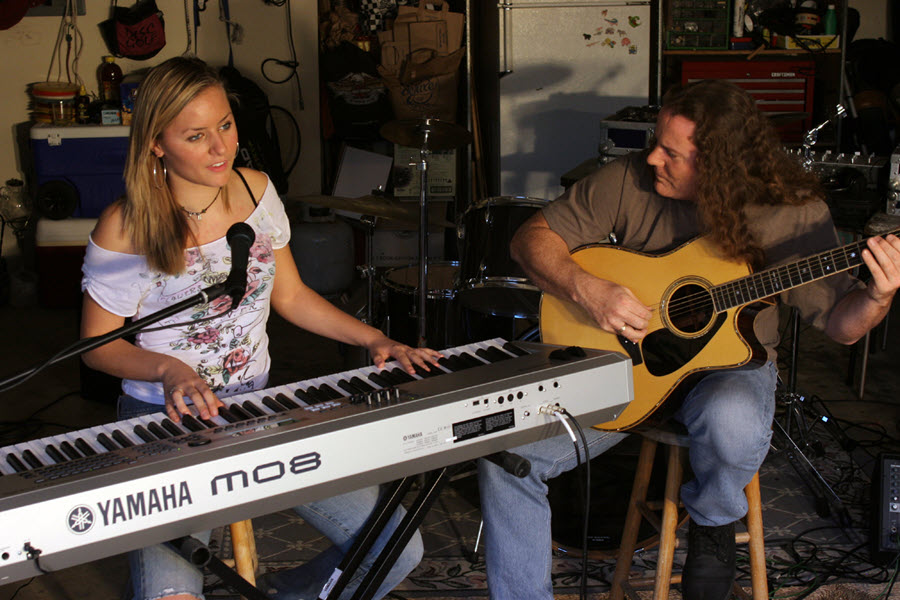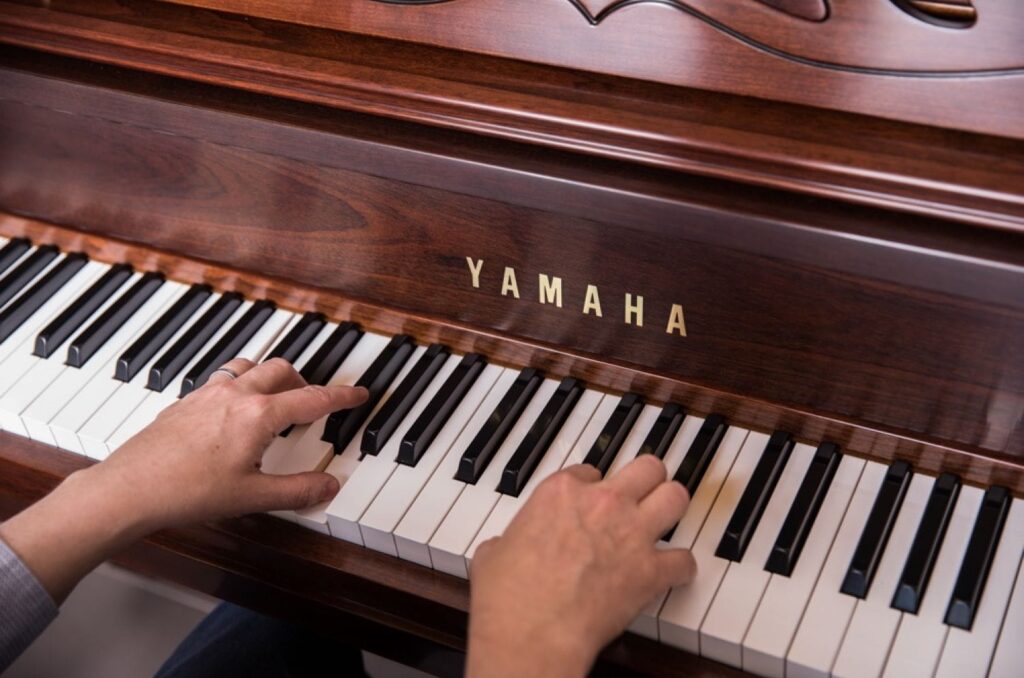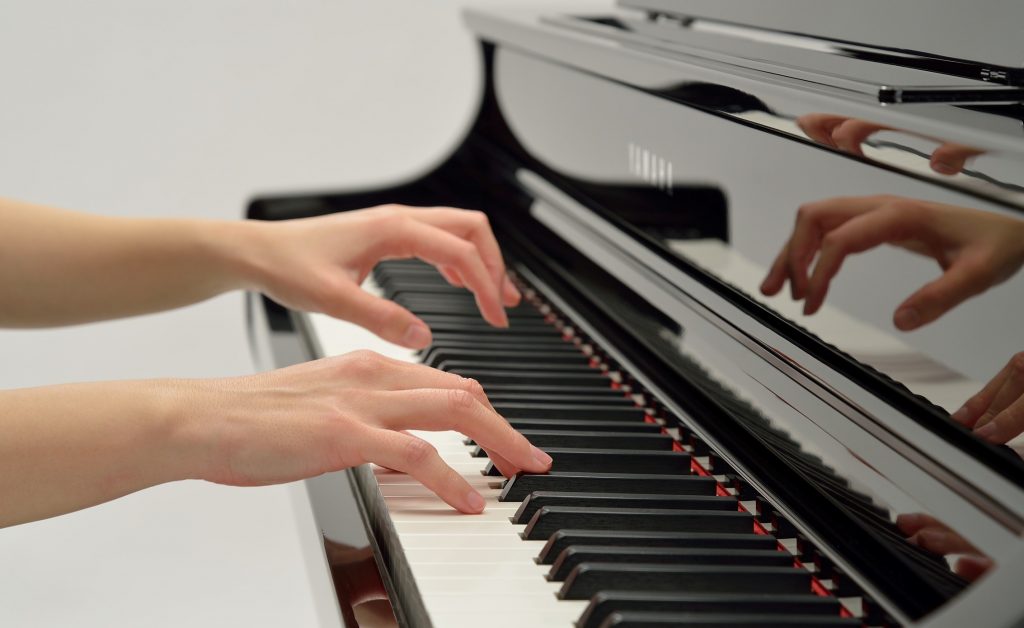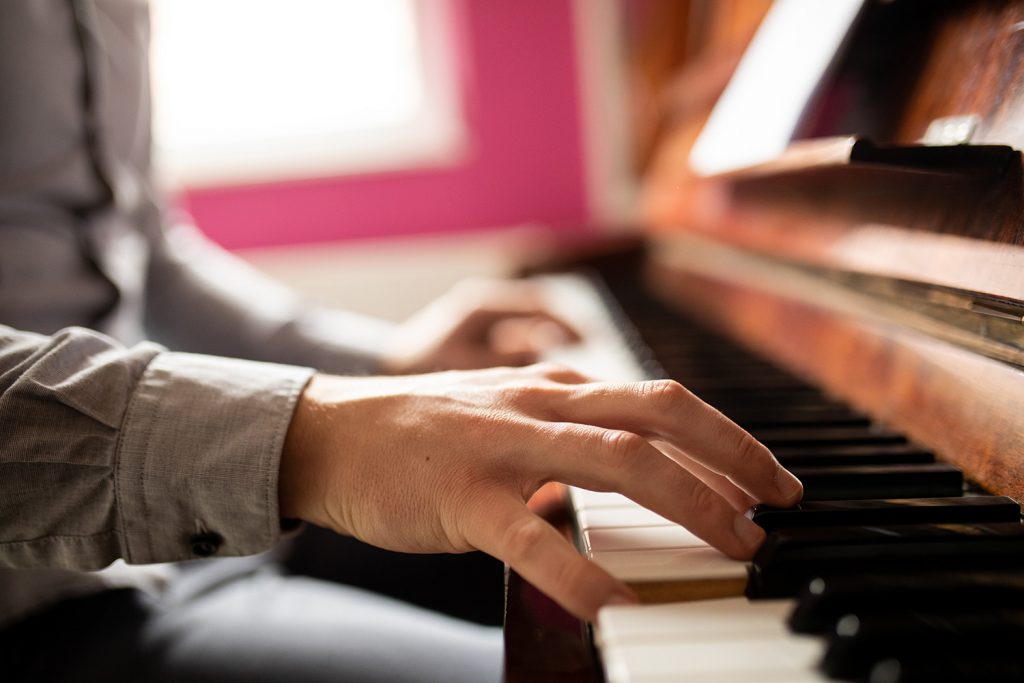Tagged Under:
Basic Piano Chords for Beginners, Part 1
Learn the four most common chord types.
One of the wonderful things about playing the piano (or any keyboard) is that you can play multiple notes at the same time, making the music sound full and rich. When you play three (or more) notes at the same time they are called chords. There are many different types of chords, each having their own recognizable sound. Let’s learn the four most common ones and how to play them.
Where Do Chords Come From?
Most music is based on a key center, or key signature. This indicates the scale used for the note choices. When you play a note of the scale along with the third note and the fifth note above it at the same time, a three-note chord called a triad is formed.
For example, here are the triads you can create in a C major scale, which uses only the white notes of a keyboard, with no sharps or flats (black notes). The “m” after some of these triads is short for minor; the “dim” is short for diminished — more about both of these shortly.

As you can hear, not all of these chords sound alike. That’s because the distance between the stacked notes is not always the same. If you count the adjacent black and white notes (the half steps) between each stacked note, you’ll find that some are four notes away, others are only three. Half steps help us to understand how the four main chord types are constructed.
The Four Main Three-Note Chord Types
The first (and probably most-used) chord type has just three notes and is called a Major triad: it is labeled as just a letter when using chord symbols. (That’s the “C” above the notation in this example.)
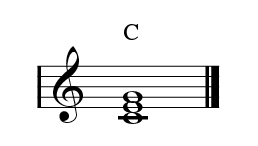
As you can see in the keyboard illustration below, the Major triad has four half steps between the lowest note (the root) and the middle note (the interval known as the third), with three half steps between the middle note and the highest note (the interval known as the fifth). This is usually played with your thumb (1) on the lowest note, your middle finger (3) on the middle note, and your pinky (5) on the highest note.

If you lower the middle note by a half step, you get a minor triad. In a chord symbol, it is indicated by adding a lower-case “m” — in this case, the “Cm” above the notation.
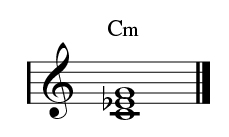
A minor triad has three half steps between the root and the middle note (the interval known as the minor third), and four half steps between the middle note and the highest note. Again, this is usually played with the thumb, middle finger and pinky.

When you take a Major triad and raise the top note by a half step, you get an augmented triad, which has four half steps between each of the three notes. The chord symbol for this type of triad often uses the abbreviation “aug,” or will use the letter followed by a plus sign (C+).
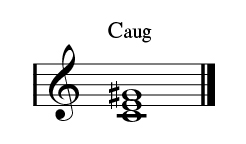
These are also usually played with the thumb, middle finger and pinky.

The last chord type is called a diminished triad. It has three half steps between each of the notes: you take a Major triad and lower the middle and top notes each by a half step to form it. The chord symbol will either abbreviate the word diminished to “dim,” or will use a small circle, like C°.
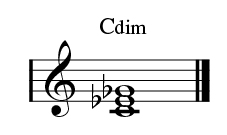
It’s usually easier to play the middle note of a diminished triad with your index finger (2) and the highest note with your ring finger (4).

Here are the four chord types in the key of C:

As you can hear, they all sound quite different! Many people commonly describe the Major triad as sounding open, happy, and at rest. The minor triad is a bit moody and has a sadder quality. The augmented triad has a more exotic sound, and the diminished triad has a somewhat dissonant, unsettled quality to it. Spend time playing these four chord types formed on each note on the keyboard, and be sure to play them higher and lower on the keyboard to get your ear acquainted with their tonality.
You should also learn how to play these chords with the notes rearranged in a different order; these are called inversions. For example, instead of C-E-G, move the C to the top of the stack so you are playing E-G-C. Then do this again, so you are now playing G-C-E. Do this for all four chord qualities, as shown below, using these suggested fingerings. (Add the root note in octaves with your left hand so you clearly hear that they remain a C type of chord.)

Four-Note Chord Types
If you stack one more note on top of a triad (skipping a note in-between) you get what are called seventh chords. Here are those chords as built up on the C major scale:

What you don’t see in this example are any augmented or diminished chords. This requires a little explanation.

The chord built on the fifth step of the scale (in this case, G) is called a dominant seventh (in the chord symbol, shown in this case as G7) and when you raise the third note up from the bottom (D to D# in this case) it becomes a G seventh with an augmented, or raised, fifth (with the chord symbol G7aug, or sometimes G7#5). In many pop and show tunes, this chord is often used as an intro, followed by the root tone chord of the key (in this case, a C major chord).
The chord built on the seventh step of the scale, which was a diminished chord in our triad example, here becomes a minor-seventh with a flatted fifth (also called a half-diminished seventh chord, with the chord symbol, in this case, shown as Bm7♭5). If you lower the top note of the chord by a half step, it then becomes the fully diminished seventh chord (in this case, with the chord symbol Bdim7, also notated as B°7).
Here’s how this all sounds:
As before, you should also learn to play the inversions of these chords by moving the lowest note of the chord to the top, as shown in the illustration below, which again includes suggested fingerings.
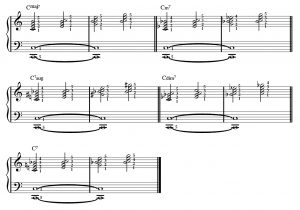
In Part 2, we’ll show you how to recognize these basic chords in popular songs.
All audio examples played on a Yamaha P-515
Check out our other Well-Rounded Keyboardist postings.
Click here for more information about Yamaha keyboard instruments.











